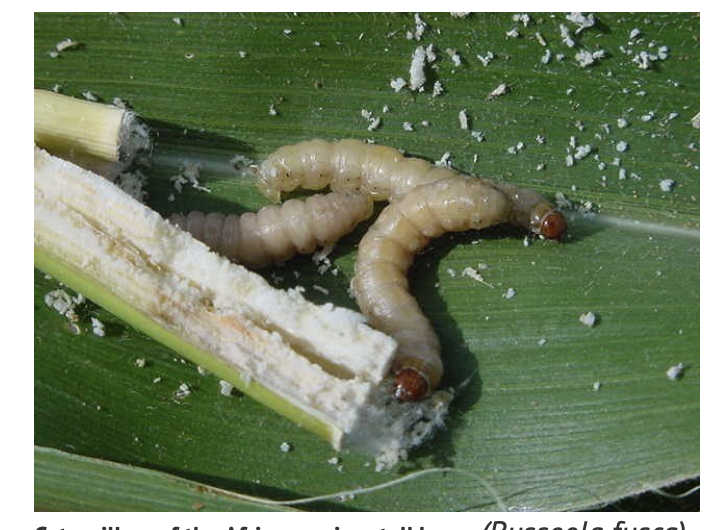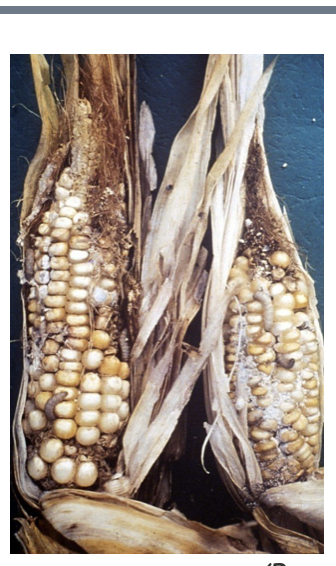Credits: Biovision-Infonet

(c) D. Cugala, Stemborer team, icipe

(c) A. M. Varela, icipe
Stemborers are the most important insect pests of maize in sub-Saharan Africa. Yield losses vary between 10-70%. Several species have been reported. The importance of a species varies between regions, within a country or even the same eco-region of neighbouring countries. At least four species attack maize in eastern and southern Africa, with yield losses reported to vary from 20 to 40%, depending on agroecological conditions, crop cultivars, agronomic practices and intensity of infestation.
The most important are the African maize stalkborer(Busseola fusca) and the spotted stemborer (Chilo partellus).
The pink stalkborer (Sesamia calamistis) and the sugarcane stalkborer (Eldana saccharina) are of minor importance in maize.
Early warning signs: Young plants have pinholes in straight lines across the newest leaves. This is the time to treat – before the caterpillars move into the stem.
What to do:
- Conserve natural enemies. Parasitic wasps and predatory ants are important in natural control of stemborers.
- Destroy crop residues to kill pupae left in old stems and stubble and prevent carry-over populations. This helps in limiting initial establishment of stemborers on the following season’s crops.
- Intercrop maize with crops that are non-hosts for stemborers (e.g. cassava and grain legumes).
- Intercrop maize with a repellent plant such as desmodium and plant an attractive trap plant, such as Napier grass, as a border croparound this intercrop to protect maize from stemborers. This technology is known as “push-pull”.
- Use neem products. Simple neem products are reported to be effective for control of stemborers. Place a small amount of neem powder (ground neem seeds) mixed with dry clay or sawdust at a rate of 1:1 in the funnel of the plant. One kg powder should be sufficient to treat 1500 to 2000 plants. Rainwater dissolves the active substances in neem powder as it gathers in the funnel and washes out the powder. Where rainfall is irregular a liquid neem seed extract can be sprayed into the funnel.